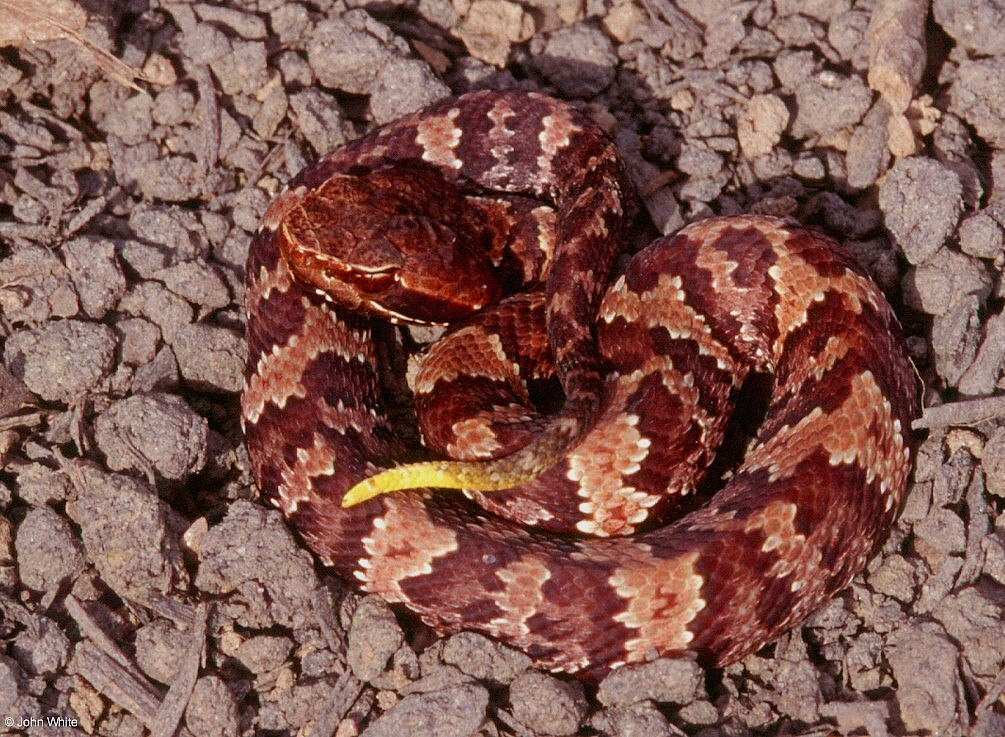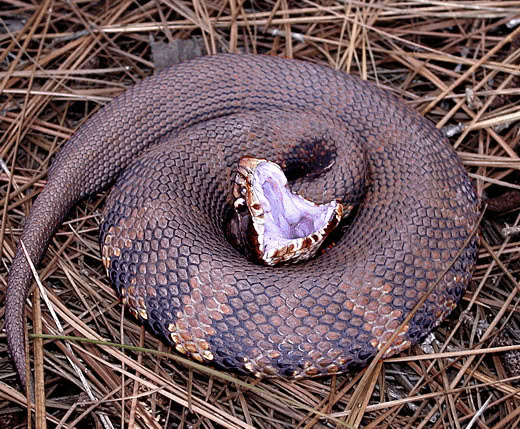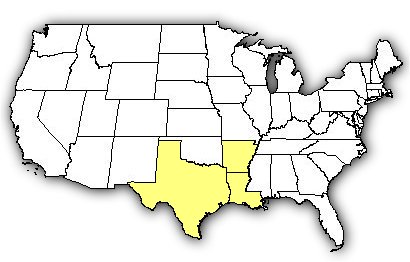Cottonmouth
Introduction
 The cottonmouth or water moccasin. is a venomous semi aquatic snake. They can be found primarily in the Southeast United States. They have triangular heads with a dark line going through the eyes. Unlike the coral snake, the color of the cottonmouth varies significantly. They be have bright beautiful colors, or they can be black or brown. These snakes are fairly large as they can grow to lengths of 24-48 inches.
The cottonmouth or water moccasin. is a venomous semi aquatic snake. They can be found primarily in the Southeast United States. They have triangular heads with a dark line going through the eyes. Unlike the coral snake, the color of the cottonmouth varies significantly. They be have bright beautiful colors, or they can be black or brown. These snakes are fairly large as they can grow to lengths of 24-48 inches.Behavior and Diet
Cottonmouths, being semi aquatic stay near the water. The live in swamps, wetlands, or floodplains. They are also known to live under logs and twigs near the water. They come out during both the day and the night. These cottonmouths consume a variety of prey. The eat both aquatic and terrestrial animals. Some of their prey include fish, baby alligators, lizards, turtles, smaller snakes, and mammals. Cottonmouths are aggressive snakes as they don't back down from their predators. They swim with their whole body above the water. Although they are aggressive, they seldom bite. They only bite if they are provoked by either being picked up or stepped on.
Venom
The cottonmouths venom is classified as hemotoxic venom. This type of venom can be extremely deadly and it can cause death. This type of venom attacks blood and tissue cells near the area where the bite was. It causes bite victims to experience blood loss in that area. Instead blood come out of other areas such as eyes, ears, and fingernails. This damage can be permanent.



